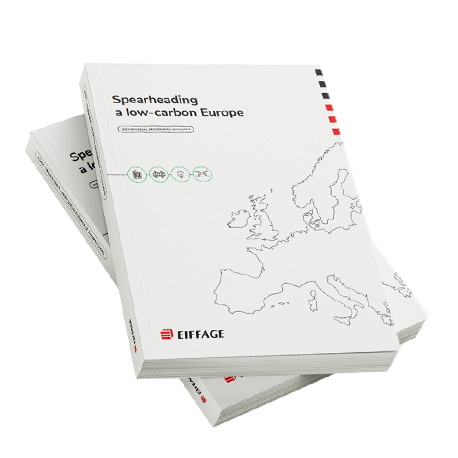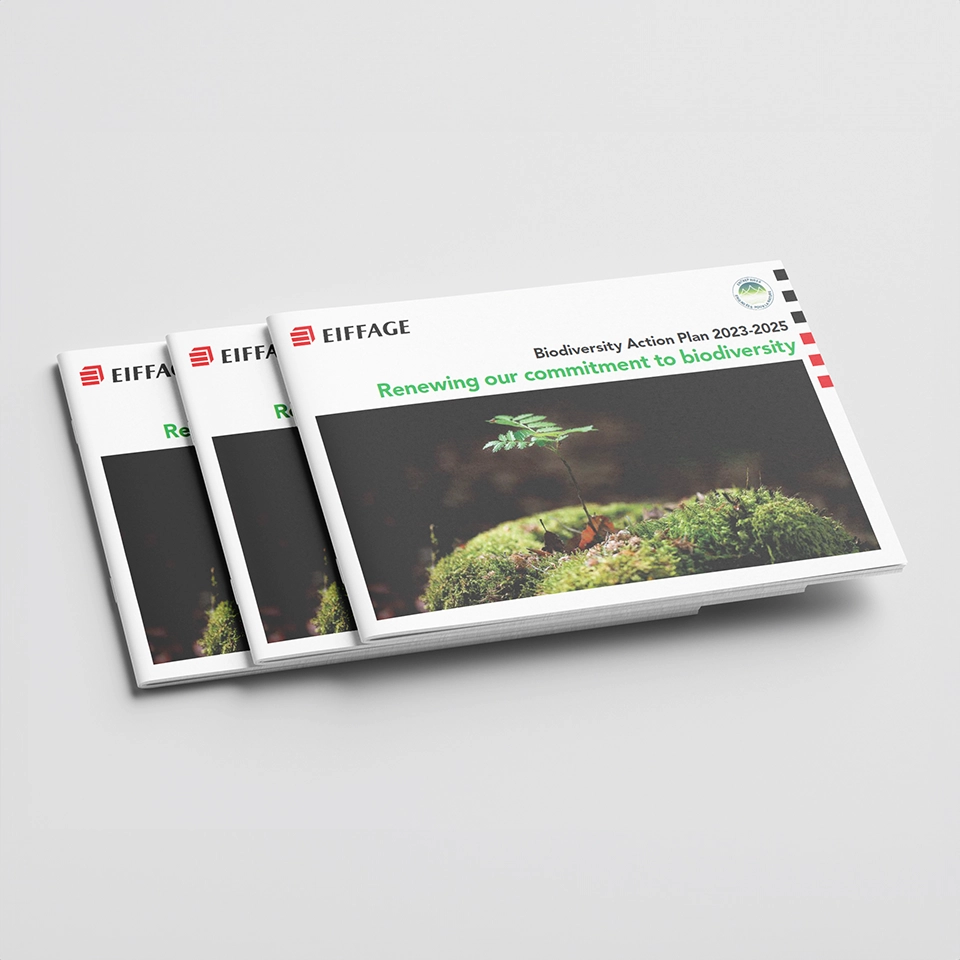Biodiversity, our know-how in ecological engineering
Stretching across vast expanses of land and habitats, major motorway and railway infrastructure, such as the BPL HSL or the APRR and AREA networks, illustrate the way in which Eiffage applies its expertise in ecological engineering – a rapidly growing domain central to our biodiversity solutions.
Expanding ecological engineering activities
Ecological engineering covers all techniques and projects that seek to bolster ecosystem resilience by rebuilding natural environments, restoring damaged areas and optimising existing ecosystem functions. In February 2020, Eiffage took its first steps in this emerging market, spurred by its strong belief in the potential of environmental engineering, both in terms of business and jobs, by joining France's Professional Union of Ecological Engineering (UPGE).
To meet the growing demand for these services, in particular in public contracts, we are expanding our activity and developing our expertise in ecological engineering to complement the array of specialised businesses and guarantee balance with partner SMEs. Our entry point is primarily in extensive earthworks projects or high-value contracts on which we can collaborate with other providers.
Applying ecological engineering in regional development projects – the BPL HSL
Inaugurated on 1 July 2017, the Brittany—Pays de la Loire high speed rail line (BPL HSL) is the extension of the Paris—Le Mans rail line opened in 1989 and the largest project ever undertaken by Eiffage. The BPL HSL environmental offset programme is upheld as a shining example by companies the world over. In addition to the offset initiatives required by current regulations, we proactively made the decision to trial a variety of solutions to protect and enhance biodiversity in the areas along the route.
Between 2010 and 2013, we tested the Natural Heritage Intervention Fund (FIPAN), a mechanism to finance ecological restoration work designed by Brittany-based ecological engineering company Dervenn and implemented in partnership with the Green Cross France & Territoires environmental charity. The fund aims to develop a financial model that recognises the living world and biodiversity as fundamental to value creation. The BPL FIPAN made it possible to fund studies and work on farm land identified as valuable in terms of ecological services, in particular to treat wastewater. Eiffage planted 500 metres of shrubbery and some 10 trees to help filter water, installed bird boxes and renatured the banks of the Yaigne river.
This trial demonstrates that those keen to take action for the environment can come together and implement initiatives on the ground in a coordinated effort where everyone brings their own strengths and expertise. It lends credence to a regional ecological engineering project based on the concept that we should pay to maintain ecological services and promotes working with different local players and residents interested in the approach.
In an effort to promote the Group’s expertise in ecological engineering and share knowledge with other interested parties in the market, Eiffage regularly publishes feedback on its ecological engineering resource centre about matters such as rebuilding natural environments, restoring damaged areas and optimising existing ecosystem functions.
-
218 hectares
of woodland replanted
-
477 hectares
of habitats recreated
-
275 water structures
built along the line to enable animals to move around freely
The BPL HSL – an exemplary environmental project
Implementing an observatory to monitor performance
In order to measure the long-term impact of the BPL HSL on the areas through which it runs, an observatory was set up in 2012 and will operate for 10 years after the line is commissioned. Bringing together various local stakeholders, as well as SNCF Réseau and Eiffage Rail Express, this scientific body analyses the challenges and opportunities that arise as a result of the high speed line, both environmentally and socio-economically. The observatory measures the economic and environmental impact of the high speed line, reflecting Eiffage’s commitment to societal concerns in its regional development plans.
Protecting natural assets crossed by motorway infrastructure
APRR and Eiffage’s other motorway concessions endeavour to protect wildlife across the 10,000 hectares surrounding its motorway networks (APRR, AREA, A’liénor, Adelac and the Millau viaduct) by putting in place biological corridors, observatories, measures to protect waterways, projects to boost the bee population, wildlife crossings, reduced mowing frequency and animal shelters.
APPR earned ISO 14001 certification by taking into account the environmental impact of all its motorway operations. Updated in 2017, the process covers the full range of environmental impacts caused by the motorway – in normal conditions, following traffic incidents and during weather events. These impacts are managed through a number of policies, on water, noise, waste and natural spaces. Managing environmental assets and water resources guarantees they receive effective protection over the entire life cycle of structures.
Environmental sponsorship efforts
In the face of the pressure weighing heavily on biodiversity and in particular the negative consequences caused by rising land take, land fragmentation, the destruction of natural ecosystems and encounters with wildlife, Eiffage is keen to extend its efforts to support biodiversity through concrete sponsorship initiatives.
By supporting partners involved in combating biodiversity erosion, we can make an even more direct contribution to preserving the living world that complements the efforts the Group makes day in, day out to avoid, mitigate and offset the impact of its operations.
That is why Eiffage and its subsidiaries have signed several partnership agreements, so as to bolster their actions to protect and manage biodiversity. Here are a few examples of these actions:
- Reintroduction of the European mink by reconquering its natural habitats through the LIFE Vision programme run by the French Animal Welfare League (LPA).
- Protection of large birds of prey in the Cévennes region in south-central France, especially around the Millau viaduct, through a programme run by the French Bird Protection League (LPO).
- Protection of endangered tortoises, such as the Hermann’s tortoise, through a skills sponsorship programme with the Station for the Observation and Protection of Tortoises and their Environment (SOPTOM) to open a new tortoise shelter and treatment centre in Carnoules, southeastern France, and Senegal in 2019.
- Protection of the Eurasian lynx, listed by the International Union for Conservation of Nature (IUCN) as a protected endangered species, with the ATHENAS organisation in France’s Jura region.
- Protection of plane trees along the Canal du Midi, a true natural heritage site in southern France, supporting efforts to combat the canker stains that threaten these remarkable trees, by sponsoring the French waterway network (VNF).
-
Bretagne- Pays de la Loire high-speed line
182 km of railway, 240 engineering structures
-
Key operational partners
To effectively combat biodiversity erosion, Eiffage has developed an extensive network of partners with universities, R&D bodies, professional working groups and institutional working groups in the construction industry as well as environmental NGOs.

